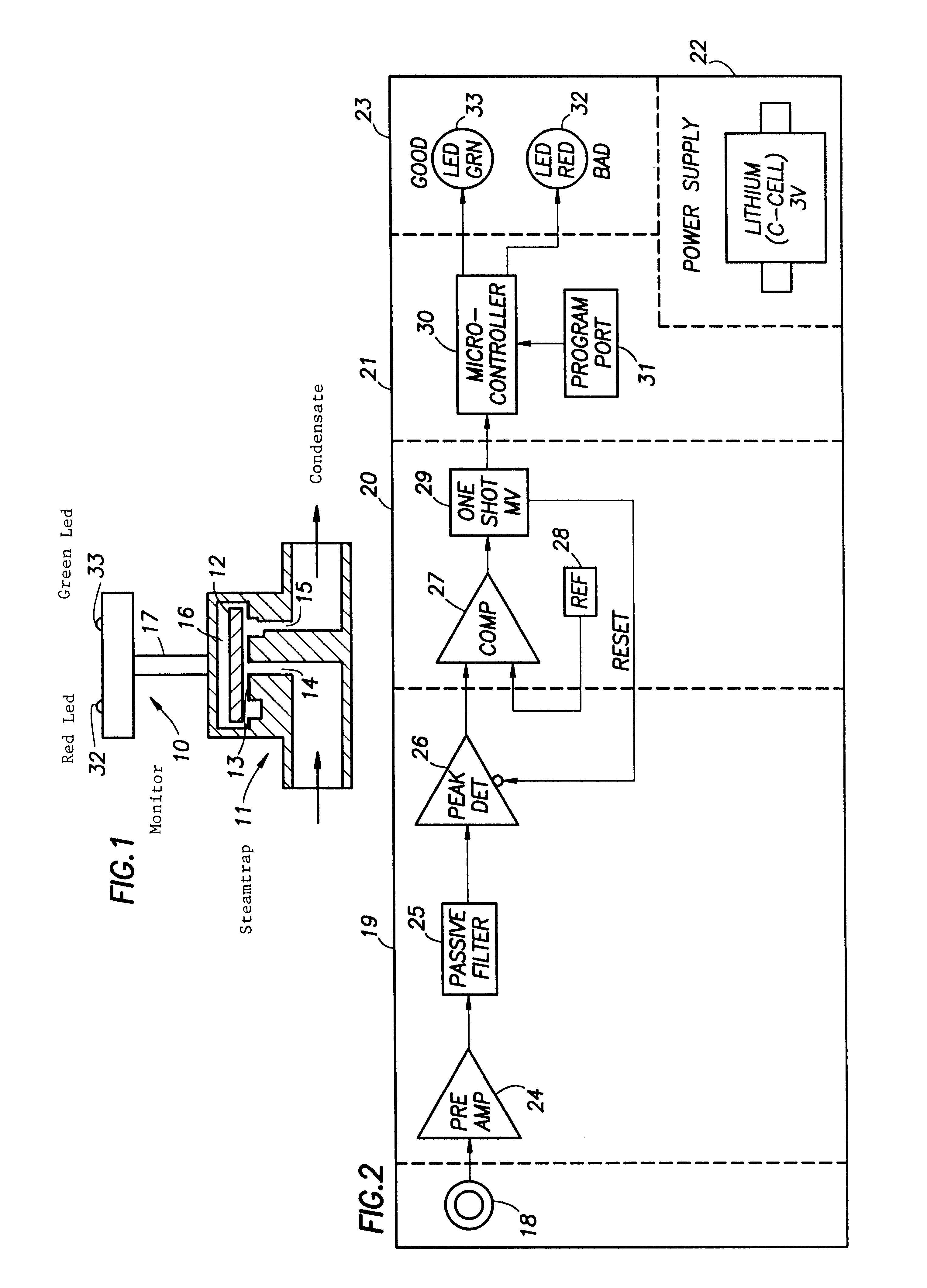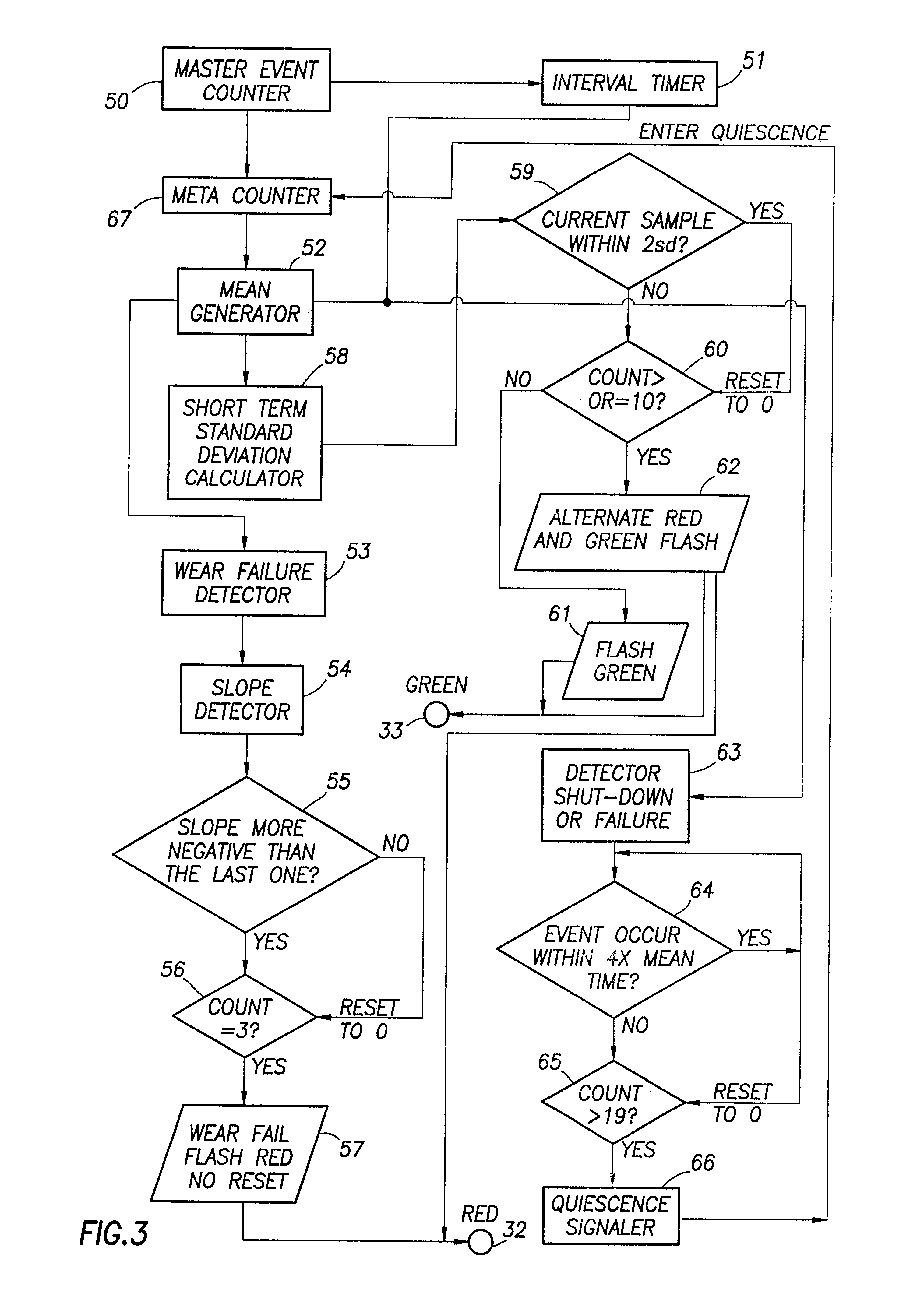Self-contained steam trap monitor
a self-contained, steam trap technology, applied in the direction of liquid/fluent solid measurement, instruments, nuclear elements, etc., can solve the problems of large number of steam traps, difficult access to steam traps, and difficulty in locating the steam traps themselves
- Summary
- Abstract
- Description
- Claims
- Application Information
AI Technical Summary
Benefits of technology
Problems solved by technology
Method used
Image
Examples
Embodiment Construction
The self-contained monitor of the present invention is indicated generally at 10 in FIG. 1 mounted on the bonnet of a conventional disk-type steam trap indicated generally at 11. The disk trap 11 utilizes the heat energy in hot condensate within the system (not illustrated) in which the steam trap operates and the kinetic energy in steam to open and close a valve disk 12. The disk trap 11 is a phase detector, sensing the difference between liquid and gas or vapor.
During initial start-up, pressure created by cold condensate pushes the valve disk 12 off a seating surface 13, which uncovers an inlet port 14 and discharge outlet port 15, allowing discharge of the condensate from the system. As the condensate reaches the inlet port 14 (a restriction), it experiences a decrease in pressure and an increase in velocity. If the condensate is very close to steam temperature, the lower pressure will cause it to flash into steam. The resulting high velocity flow beneath the disk 12, with its at...
PUM
 Login to View More
Login to View More Abstract
Description
Claims
Application Information
 Login to View More
Login to View More - R&D
- Intellectual Property
- Life Sciences
- Materials
- Tech Scout
- Unparalleled Data Quality
- Higher Quality Content
- 60% Fewer Hallucinations
Browse by: Latest US Patents, China's latest patents, Technical Efficacy Thesaurus, Application Domain, Technology Topic, Popular Technical Reports.
© 2025 PatSnap. All rights reserved.Legal|Privacy policy|Modern Slavery Act Transparency Statement|Sitemap|About US| Contact US: help@patsnap.com



